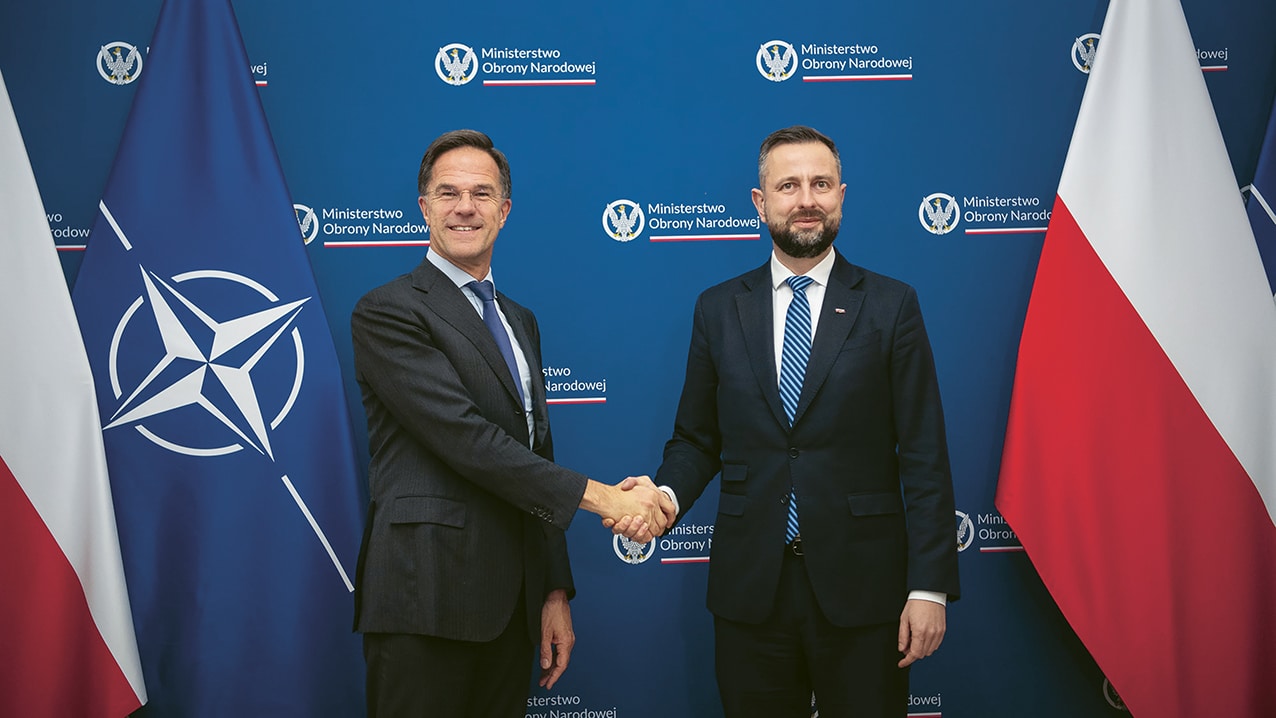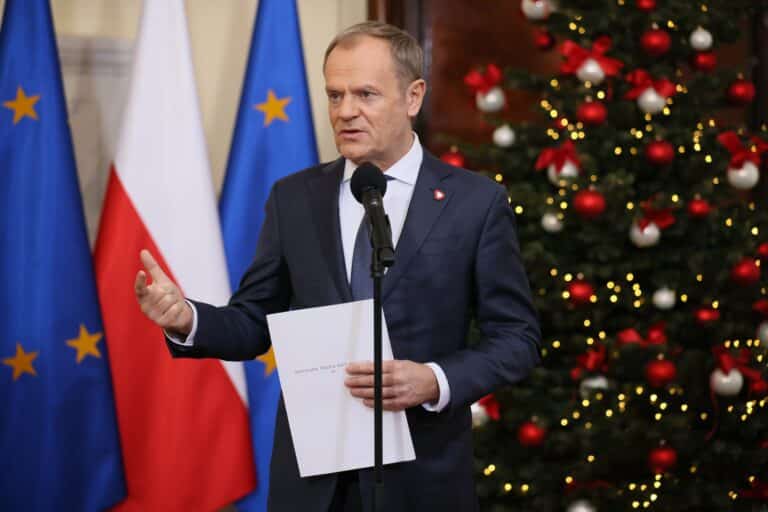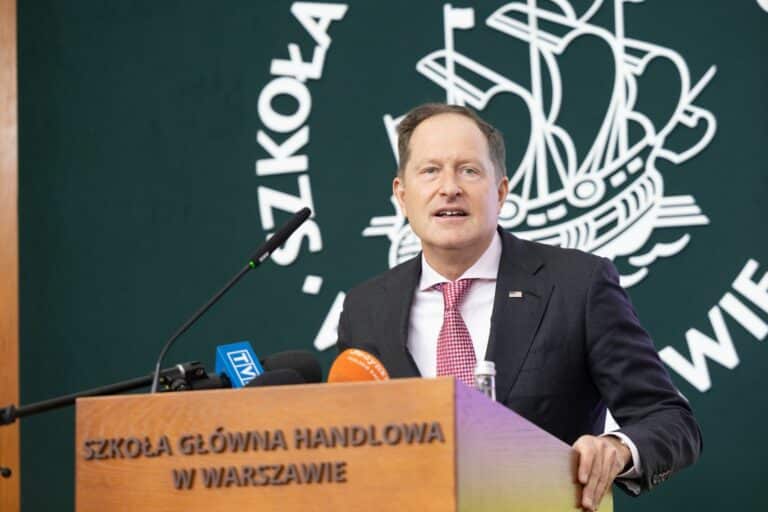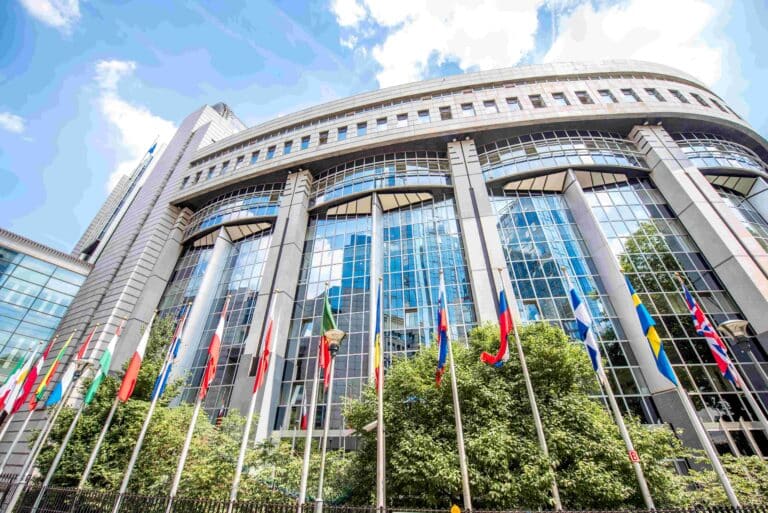Poland First on NATO’s Eastern Flank
This year, Poland celebrates its 25th anniversary of joining the North Atlantic Treaty Organisation, which has become the foundation of Poland’s contemporary alliance and defense strategy.
Its membership also strengthens the security of the entire Eastern and Central European region, the so-called NATO eastern flank. This was underscored by the first visit of the new NATO Secretary General, Mark Rutte, to Warsaw on November 13, 2024, where he met with Poland’s top officials: President Andrzej Duda, Prime Minister Donald Tusk, Minister of Defence Władysław Kosiniak-Kamysz, and Minister of Foreign Affairs Radosław Sikorski.
Their discussions focused on military production in Europe, extending the NATO Pipeline System to the eastern flank, and transferring Polish jet fighters to Ukraine. However, the dominant topic was the Russian Federation’s threat to European peace. The President highlighted Russian provocations and violations of NATO airspace, including over the Baltic Sea. The Prime Minister emphasized Poland’s ongoing efforts to strengthen its armed forces, with defense spending set to increase to 4.7% of GDP in 2025, the highest rate among all NATO countries. He also presented plans to reinforce Poland’s eastern border with the “East Shield” system, which includes land fortifications, detection facilities, bases, logistics hubs, and drone defense along 700 km of the border, including 300 km with Belarus. These measures stem from NATO’s Vilnius 2023 summit, where the most detailed NATO defense plans since the Cold War were adopted to address the threat of Russian full-scale aggression.
Poland’s active engagement in NATO has a long history. Over the past 25 years, 75,000 Polish military and civilian staff have served in missions in Afghanistan, Bosnia and Herzegovina, Macedonia, Greece, Iraq, Kosovo, Lithuania, Latvia, Estonia, Pakistan, Iceland, and Romania. Currently, Polish units are stationed in Latvia, Romania, Turkey, Kosovo, and Iraq, while Polish air forces regularly participate in Air Policing operations to secure airspace over the Baltic states. Notably, Poland contributed to NATO activities even before officially becoming a member, including missions in Bosnia and Herzegovina in 1996 and Kosovo in 1999.
NATO’s security system is based on the principles of deterrence and collective defense: “one for all, all for one.” Poland fulfills these responsibilities by contributing significantly to military initiatives and participating in exercises like Defender Europe and Cold Response, while also organizing large-scale drills on its own territory, such as Anakonda, Dragon, Saber Strike, BALTOPS, Noble Jump, and Brilliant Jump. This year, Poland hosted Dragon ’24 as part of Steadfast Defender, the largest NATO military exercise since the Cold War. This unprecedented exercise involved 90,000 troops from all member states, with the Polish contingent comprising 20,000 personnel and over 3,500 vehicles from 10 countries.
Poland’s contribution is also evident in the NATO Security Investment Programme (NSIP), overseen by the Ministry of National Defence. To date, 150 major infrastructure projects have been completed, with 74 more underway. These efforts have facilitated the establishment of NATO’s permanent organizational structures, such as the Forward Land Forces Battle Group (FLF BG) in Bemowo Piskie, the Counter Intelligence Centre of Excellence (CICOE) in Kraków, and four structures in Bydgoszcz: the NATO Force Integration Unit (NFIU), the Joint Force Training Centre (JFTC), the 3rd Signal Battalion, and the Military Police Centre of Excellence (MP COE). Poland also hosts three multinational headquarters: the Multinational Corps North East (MC NE) in Szczecin, overseeing troops in Poland, Lithuania, Latvia, and Estonia; the Multinational Division North East in Elbląg, managing troops from 15 member states; and the Lithuanian-Polish-Ukrainian Brigade in Lublin.
Additionally, Poland hosts substantial U.S. military assets, including the US Army Garrison Poland (USAG-P) with the US Army V Corps HQ in Camp Kościuszko in Poznań, the Armored Brigade Combat Team (ABCT) HQ in Żagań, and the 1st Cavalry Division HQ in Bolesławiec. The newest US Army Prepositioned Stock (APS), opened in Powidz on September 18, 2024, represents NATO’s largest infrastructure project in 30 years. These turn-key stocks, essential for rapid deployment, house equipment such as 80 Abrams tanks, 130 Bradley infantry fighting vehicles, and 18 Paladin howitzers. Another key facility is the Aegis Ashore Missile Defense System (AAMDS) base near Redzikowo, which, alongside a similar base in Romania, forms the European component of the U.S. Ballistic Missile Defense (BMD) system.
Poland’s cooperation with NATO continues to evolve. On December 2, 2024, Norway announced the deployment of four F-35 jet fighters, a NASAMS surface-to-air missile system, and 100 troops to protect airspace above Rzeszów, a key logistics hub for military aid to Ukraine. From November 29 to December 6, NATO conducted “Cyber Coalition 2024,” its largest cyber defense exercise, with Poland playing a leading role on the eastern flank. Germany also announced it will send Patriot missile launchers to Rzeszów in January 2025 to bolster defense.
Currently, about 12,000 foreign NATO troops are stationed in Poland, including 10,000 U.S. troops. Since Russia’s 2014 invasion of Ukraine, Poland’s armed forces have grown from 89,000 soldiers to 216,000, making it NATO’s largest army in Europe and third-largest globally after the United States and Turkey. With defense spending set to reach 4.7% of GDP in 2025, Poland leads NATO in military modernization and purchasing, reflecting the nation’s commitment to security. Public support remains strong, with 90% of Poles viewing NATO membership as vital to national security and a key deterrent to foreign invasion.







